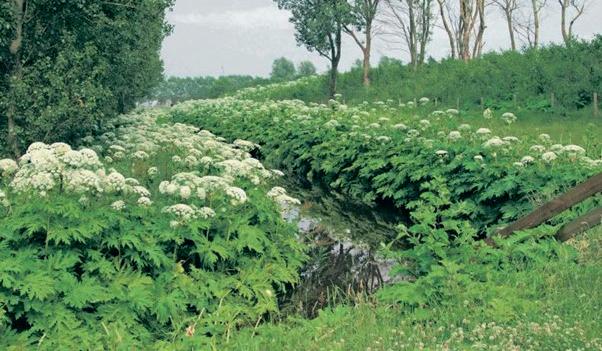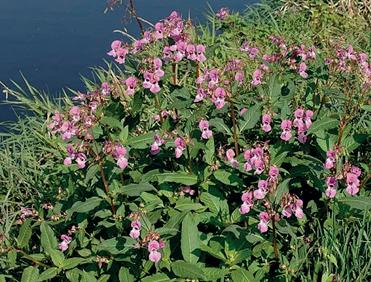
3 minute read
Invasive Species Week –12th to the 18th of May 2025
By AIDAN SUART IRD Farming for Water Agricultural Community Animator
Introduction: Invasive Species Week takes place this year from the 12th of May to the 18th of May 2025, The aim of Invasive Species Week is for organisations across Ireland and the UK come together to and raise awareness on Invasive Species and to highlight actions that can be taken to prevent their spread.
Invasive Species are species that are not native to an area which can cause harm to the Environment, Economy and to Human Health. Invasive Species can often spread quickly and cause competition with native species for resources which can lead to decline of these native species.
Environmental Impact: Invasive Species can have a major impact on the disruption of native species, Invasives species and predators often outcompete with native species for food, water, light, or habitat, Invasives can also introduce disease into an ecosystem, when it comes to invasive plants, they can have an impact on soil chemistry and interrupt water cycles. Invasive predators can decimate native populations not adapted to their presence.
Some Common Invasive Species Found in Ireland include:
Giant Hogweed- Giant Hogweed is commonly found on riverbanks, it can grow up to 5-6cm in height and has white/pink flowers, its large surface area shades out sunlight from native species and causes soil erosion along the banks of the river.

Himalayan Balsam- Himalayan Balsam is commonly found on riverbanks and in damp ground, they grow upright, flowers are usually purple in colour with many large oval-shaped pointed leaves. It’s impacts include shading out of sunlight from native species, soil erosion and less pollination from bees in native species.

Grey Squirrel- The grey squirrel is common throughout the country, they have an impact on the red squirrel population due to competing for both food and space, the species also carries the Pox Virus (SQPV) which is known to effect red squirrels within Ireland.
What can we do in the control and prevention in the spread of Invasive Species
• Become familiar with Invasive Species and how to identify them,
• Report sightings of Invasive Species to the National Biodiversity Data Centre.
• Choosing Native Species in our gardens and landscaping projects.
Waters Users should follow three simple steps when leaving the water: Check-Clean-Dry
• Check gear, clothing and footwear when leaving the water for mud, aquatic animals or plants, remove anything you find and leave at the sight,
• Clean everything as thoroughly as you can,
• Dry- Allow gear to dry










